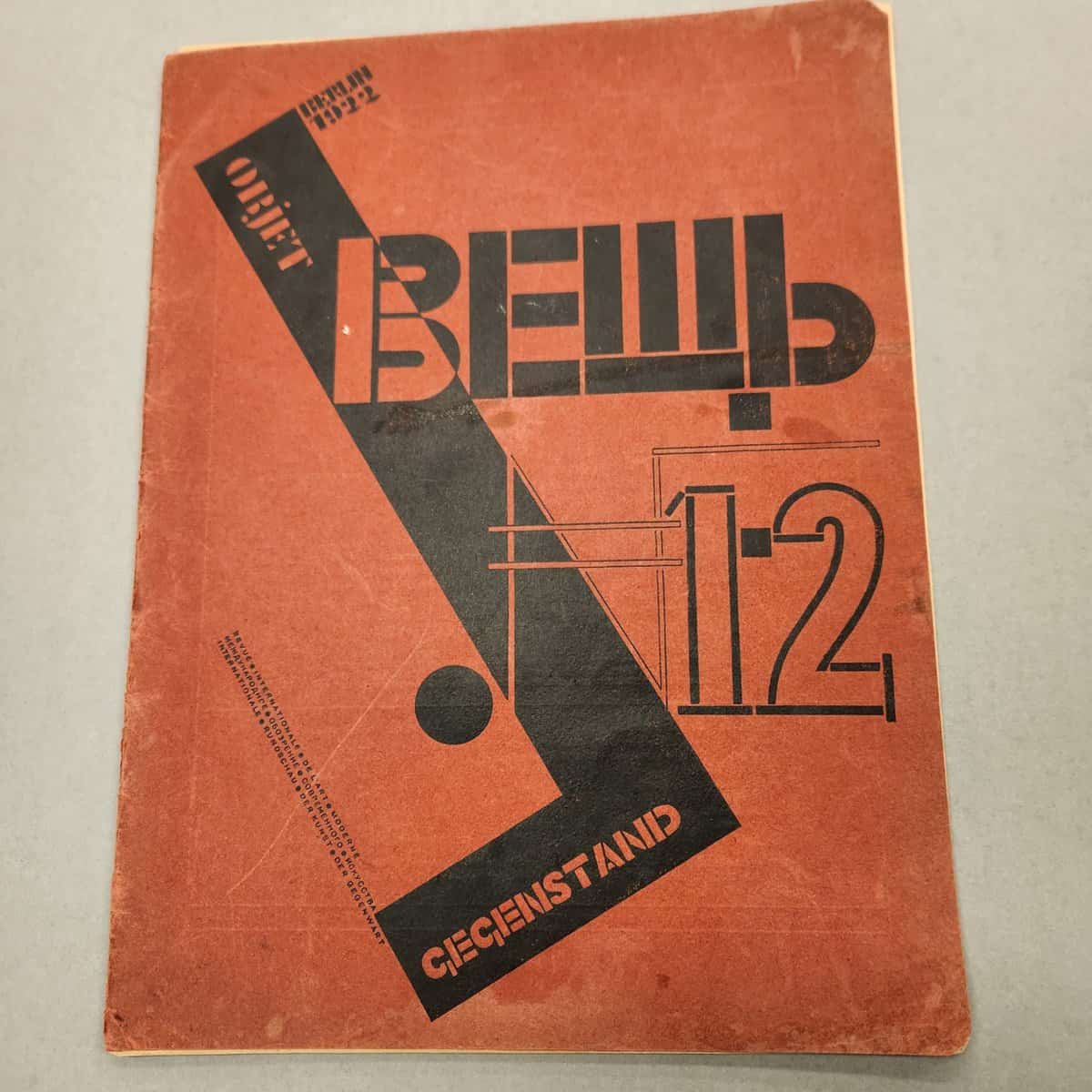The following is written by Tim Shipe, curator of the International Dada Archive
Two recent acquisitions by the International Dada Archive illustrate the diversity of Dada and its connection with the developing Central and Eastern European Constructivist movement of the 1920s.
Veshch Gegenstand Objet
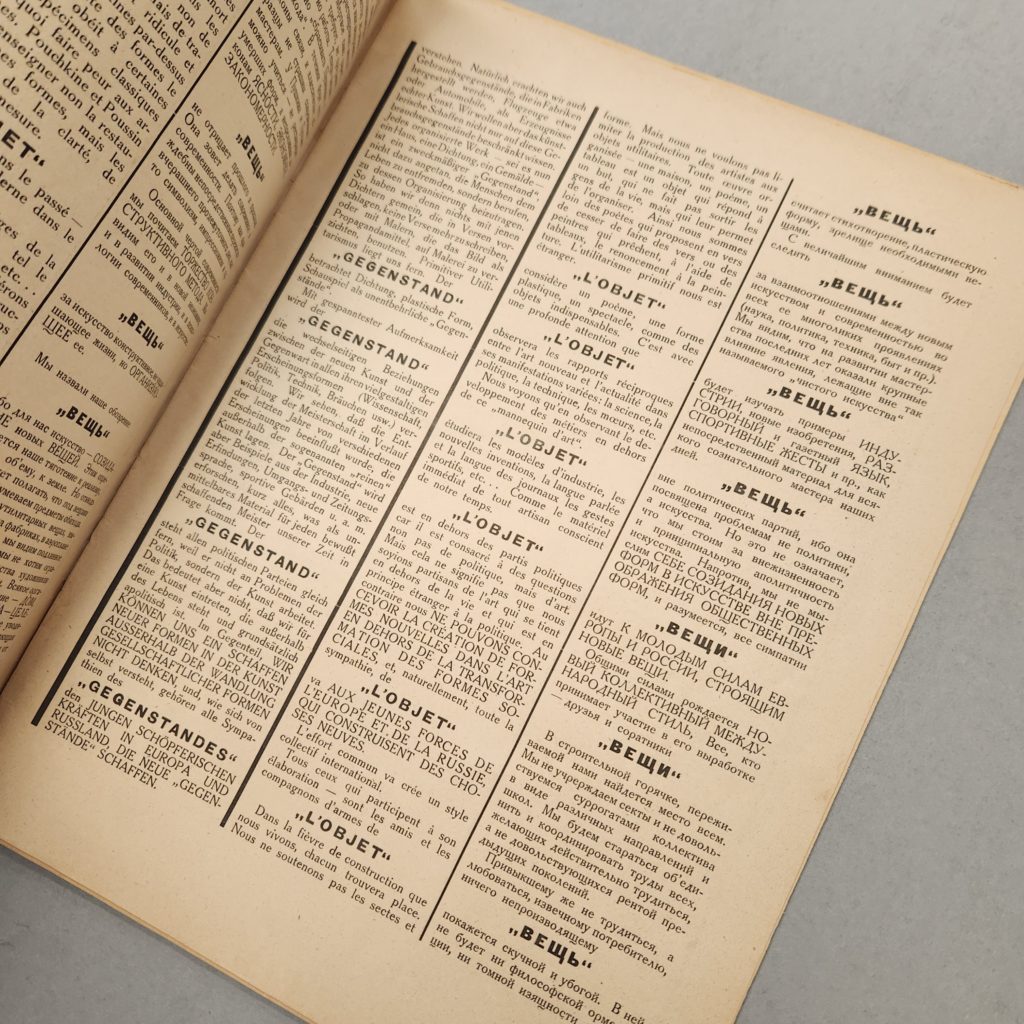
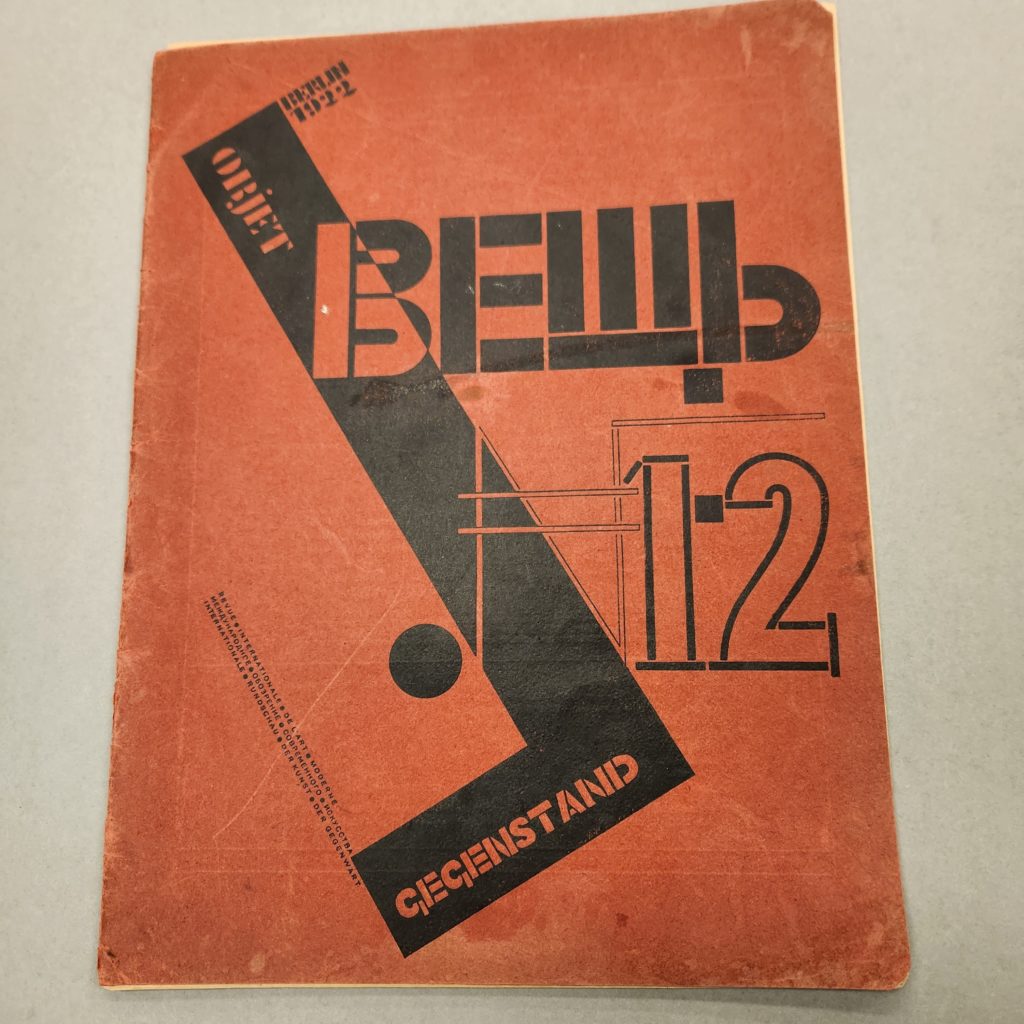
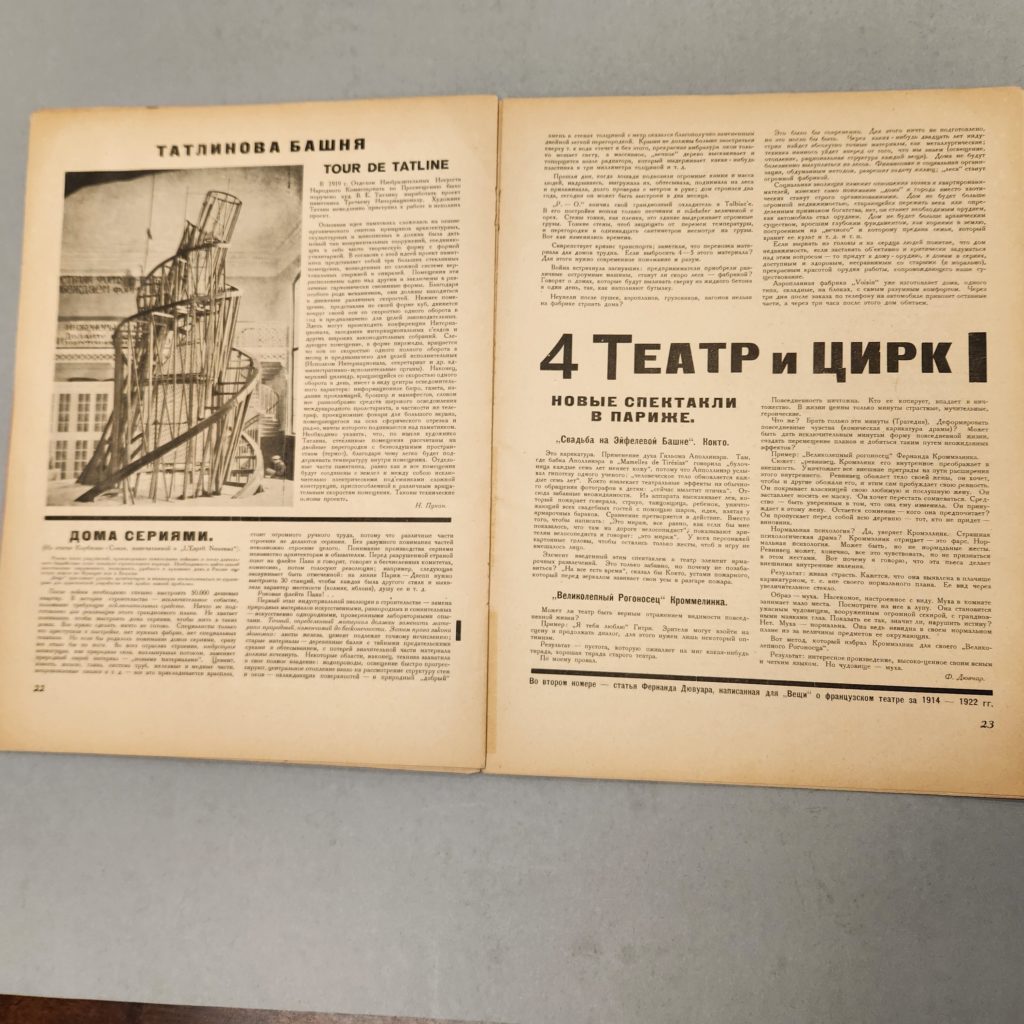
With its trilingual title and multilingual content, Veshch Gegenstand Objet is, essentially, a migrant publication, representing the presence of 300,000 Russian emigrés (both White and Red) in Berlin in the 1920s and their interaction with German and Central European avant-garde artists and writers, especially the Berlin dadaists. Edited by the Russian artist El Lissitzky, Veshch displays the sort of radical typography that remained popular in the early years of the Russian Revolution until Stalin crushed the avant-garde arts in the new Soviet Union. With three of the four issues published, Iowa now has the most nearly complete run of Veshch in North America.
Anleitung zum Unterricht im Zeichnen für textile Berufe
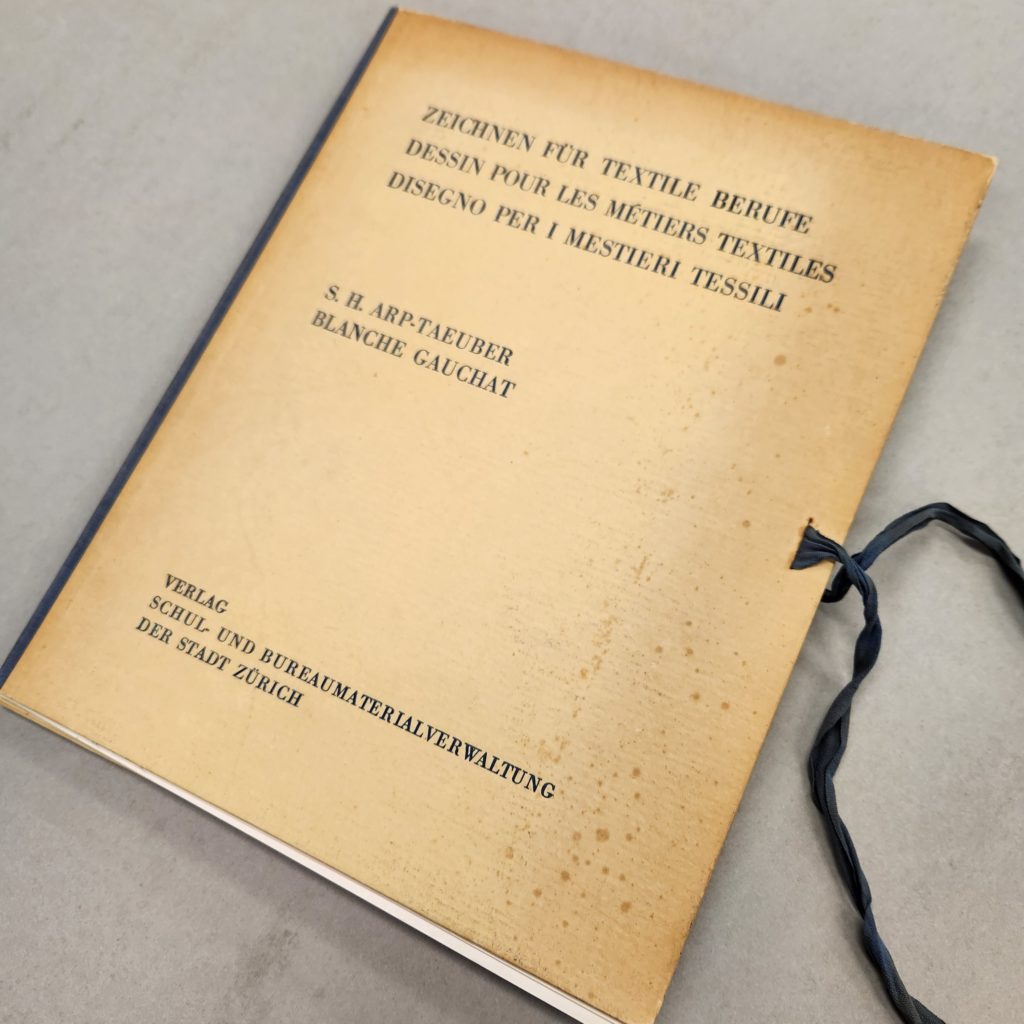

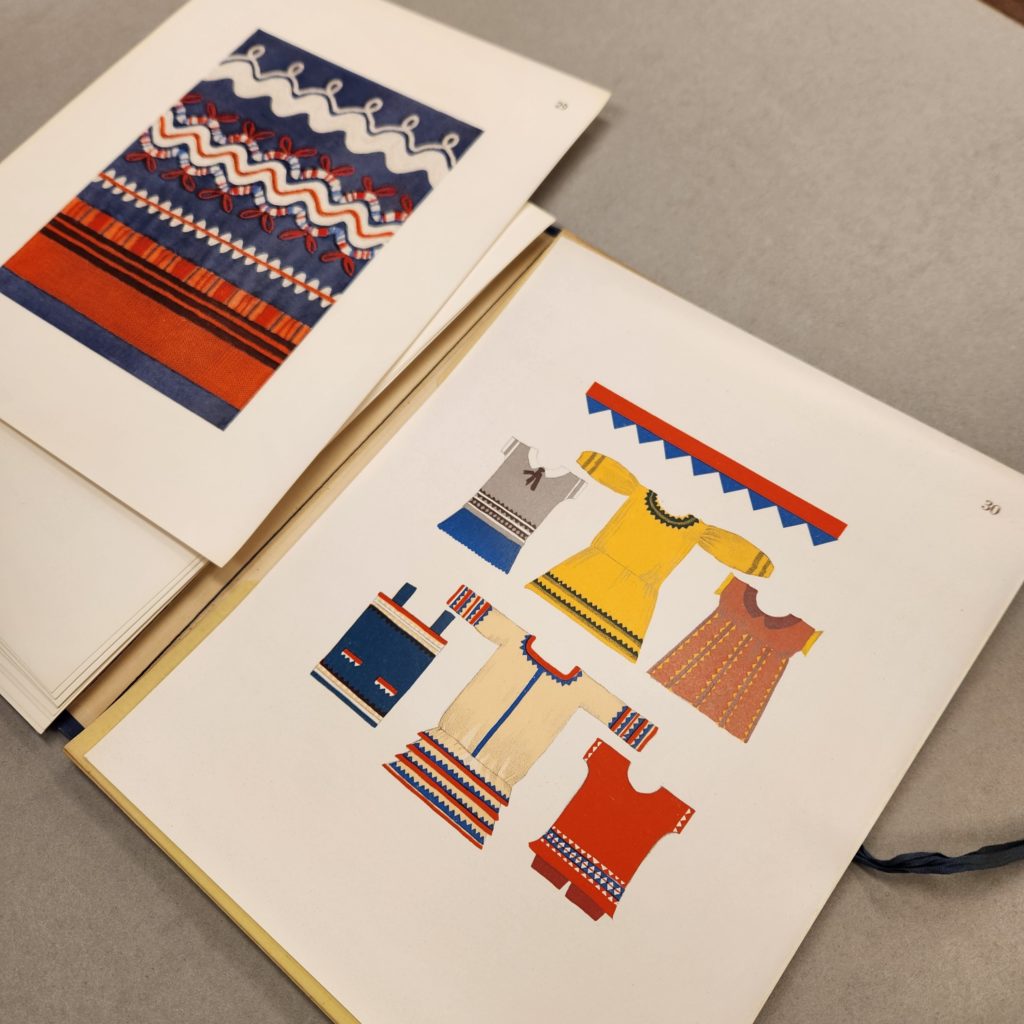
One of the founding members of the Dada movement in Zurich, and best known for her geometric paintings and puppets, Sophie Taeuber-Arp’s educational background was in the “practical” or “domestic” arts. Women dadaists like Taeuber-Arp and her similarly educated Berlin counterpart Hannah Höch raise serious questions concerning the place of stereotypically female endeavors like fabric arts in the context of the interwar avant-garde. Taeuber-Arp’s Anleitung zum Unterricht im Zeichnen für textile Berufe (Guide to instruction in drawing for textile professions) was published in 1927 by the Trade School of the City of Zurich. The color samples Taeuber-Arp created for this instruction manual are clearly reminiscent of her better-known abstract paintings and her costume and puppet designs for Dada’s Cabaret Voltaire. Iowa has the only known copy of this significant work in the U.S.
